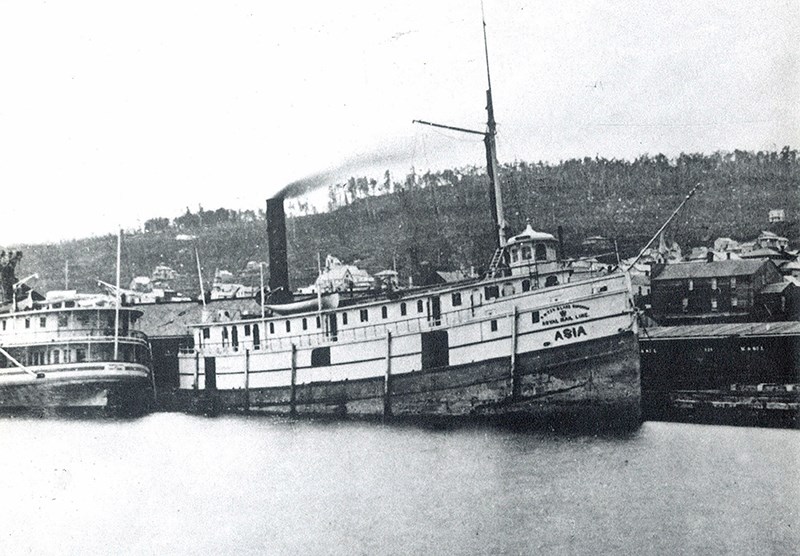 A top-heavy ship, a ferocious storm, 123 people drowned.
A top-heavy ship, a ferocious storm, 123 people drowned.
The loss of life made the sinking of the S.S. Asia one of the worst tragedies in the history of the Great Lakes.
Sarnia’s Beatty Line of steamships had acquired the 350-ton wooden paddlewheeler in 1876, and she was soon transporting passengers and cargo from her base at Ferry Dock Hill to the upper lakes.
But bad luck haunted the Asia. In the summer of 1881 the 137-foot ship struck a barge and grounded in the St. Mary’s River.
She was chartered to the Northern Transit Company the following summer and, on Sept. 13, 1882, was preparing to leave Owen Sound And cross Georgian Bay.
The Asia was loaded with freight and fuel and 125 passengers, including 30 lumbermen and five teams of horses bound for lumber camps on the French River. It was the largest cargo the nine-year-old steamer had ever taken on, and much of it was stored on deck instead of in the holds below.
Despite a storm warning, and despite misgivings of the steamship company, which briefly considered holding her in port, the ship’s emboldened master, Captain John Savage, was anxious to take charge on his first command. The Asia pulled out around midnight.
Leaving the shelter of Bruce Peninsula, she sailed directly into the teeth of the storm. The mountainous waves were terrifying and brought prayers for deliverance. To lighten the load, Captain Savage had the horses, five cows and much of the cargo pushed overboard.
Amid the human screams and bellowing of the drowning animals, a massive wave laid the Asia over on its side. She went down by the stern and the rest of the small ship soon disappeared.
Shocked passengers clung to life preservers and floating timber and an overturned lifeboat. Thirty-one people were afloat but one by one they succumbed to the waves.
Somehow, two teenagers managed to cling to a lifeboat and drifted ashore, the only survivors. It was a tragic end for a ship that had called Sarnia home.
